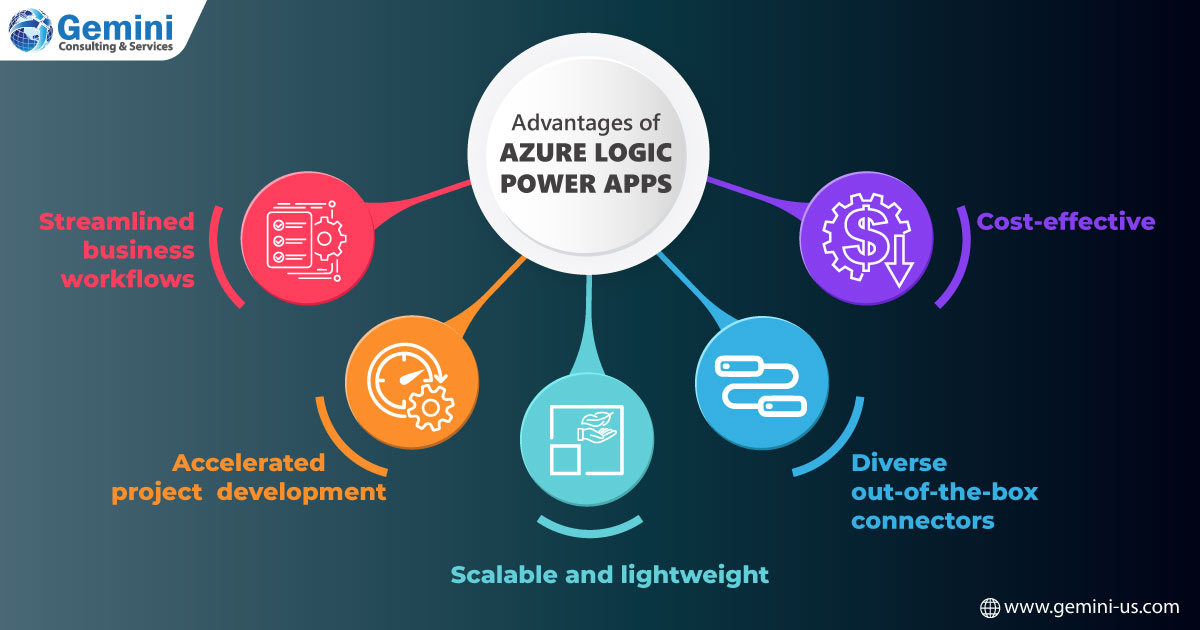Azure Logic Apps is an efficient iPaaS (Integration Platform as a Service) solution that empowers businesses to automate workflows with ease and cost-effectiveness. By consolidating resources into a single platform, businesses can optimize their focus on automation and governance, thus increasing overall efficiency. Logic Apps, as a fully managed and scalable iPaaS solution, enables the seamless handling of application development challenges by hosting and managing applications efficiently.
As part of Azure Cloud’s offerings, Azure Logic Apps provides a serverless workflow solution with a wealth of pre-built features that significantly reduce development time. Its managed and hosted subscription facilitates the development of integrations between cloud-based applications without the need for extensive coding. The platform excels in simplifying the creation of scalable workflows and integrations within the cloud environment.
Setting itself apart from traditional bespoke workflow applications, Azure Logic Apps stands out with its numerous out-of-the-box features that streamline development. It allows developers to design purpose-driven workflows triggered by events, each step invoking an App Service API app while ensuring authentication and best practices for durable execution. Here are some examples of what can be achieved with Azure Logic Apps:
- Send email notifications using Office 365 for every change or event.
- Process and route orders from customers across on-premise systems and cloud services.
- Relocate files uploaded from an SFTP or FTP server to Azure Storage.
Monitor and analyze tweets for intent and sentiment, generating alerts and tasks for review items.

How Does Azure Logic Apps work?
Azure Logic Apps leverages the If This Then That (IFTTT) architecture, enabling developers to create simple conditional statements and event triggers, reducing the need for complex code and saving development time. With Microsoft-managed API connectors and built-in operations, connecting and integrating apps, data, services, and systems becomes seamless, freeing developers to focus on business logic and functionality.
The platform also allows developers to use Azure Functions code snippets in workflows through the Inline Code action, interacting with events from Azure Services, custom apps, or other solutions using Azure Event Grid for monitoring, routing, and publishing.
Main Components of Azure Logic Apps
- Logic Apps: Provides a graphical approach for modeling business processes as workflows composed of individual steps.
- Managed Connectors: Specifically designed to connect and work with data in the Logic Apps environment.
- Triggers: Managed connectors that initiate new workflow instances based on specific events, such as receiving an email.
- Actions: Steps that follow triggers and execute actions, such as sending an email.
Azure Logic Apps reduces enterprise integration costs, minimizes manual administrative tasks, and allows businesses to focus more on deploying code and refining business logic. At Gemini Consulting & Services, we offer assistance to enterprises looking to integrate Azure with third-party services, saving both time and money. Contact us to explore how Azure Logic Apps can enhance your productivity.

- Streamlined Business Workflows: Azure Logic Apps brings a paradigm shift in business process automation by offering an intuitive drag-and-drop workflow designer, eliminating the need for coding. Its flow control decision points and looping capabilities make it effortless to break down complex workflows into manageable actions, arranged as required. The platform offers a rich selection of built-in actions and supports various connectors, seamlessly integrating with popular Azure services and applications like Office 365, Salesforce.com, Slack, Twitter, and more.
- Accelerated Project Development: Leveraging a wide range of pre-built connectors, Azure Logic Apps expedites the creation of automated business processes and system integrations. Once deployed, workflows are presented in a user-friendly manner, enabling easy initiation of business actions. These connectors efficiently facilitate integrations and actions, such as directing filtered posts to specific team messenger channels. Additionally, the visual representation of processes allows for easy replication across different workflows.
- Scalable and Lightweight: As a serverless solution, Azure Logic Apps automatically configures virtual machines based on resource requirements to execute workflows efficiently. Its scalability allows it to handle varying workloads, from zero to thousands of concurrent functions, without the need for manual configuration. Furthermore, Logic Apps effectively manage real-time events and triggers, ensuring smooth operation even during periods of inactivity or skipped actions.
- Diverse Out-of-the-Box Connectors: Azure Logic Apps offer an extensive selection of connectors, extending the capabilities of both on-premises and cloud applications. These connectors grant business logic apps permission to connect and automate tasks using existing data from various systems. By defining appropriate actions on each end, connectors facilitate seamless interactions between different services. For instance, a new calendar event in Outlook can trigger actions in Dynamics CRM using pre-built connectors.
- Cost-Effective: Azure Logic Apps follow a pay-as-you-go pricing model, eliminating upfront setup costs. Since Microsoft fully manages the platform, users are relieved of additional infrastructure maintenance expenses. As a serverless engine, Logic Apps incur no costs for unused resources, with charges applicable only when a trigger is activated (e.g., when a file is modified in Office 365), ensuring optimal cost efficiency. Moreover, developers can freely develop and test features before deploying workflows without incurring additional charges.



